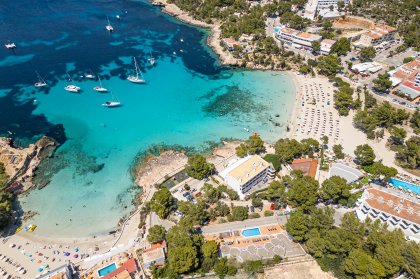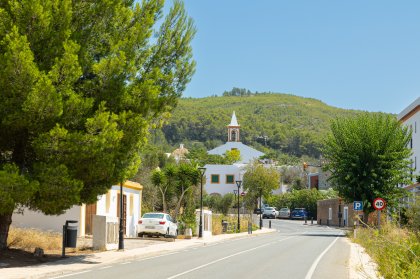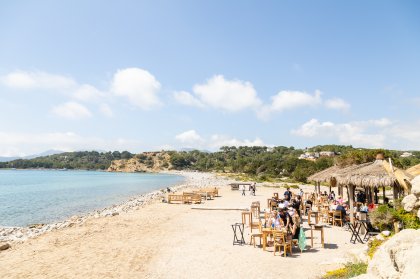Coca is frequently described as a Catalonian form of Italian pizza, without the tomato or cheese. Although, Coca is usually round in the Balearics, rather than the oval shape found elsewhere, the truth is, the comparison should end there. First, both cheese and tomato sauce are integral to pizza and almost never present on Coca. Second, there is a culture around Coca, more variation, an association with fiestas and a set of guidelines governing toppings. Coca can be quite fabulous, it certainly deserves its own culinary designation.

Coca is Catalonian flat bread, mostly open, sometimes closed, as in folded over like a turnover. It can be sweet, enriched with eggs and sugar, with additional toppings mostly sweet. Or savoury, with yeast, salt and olive oil, sometimes enriched with rendered lard and a large variety of toppings, vegetable, meat or fish. Most of the recipes I have seen use fat, either olive oil or rendered to enrich the bread like crust, it makes it slightly flakey and rich. The difference in flavour is very clear, think unadorned toasted bread, versus toast with lashings of olive oil or butter.

Traditional Coca is discreet, using only one or two toppings. It can be very simple as in pine nuts and sugar. I had a fantastic sugar and chorizo coca with my friends Vicente and his mother, Catalina, on their farm in San Carlos. We were making bread in the old oven last Autumn and needed a mid-morning snack. The delicious, homely smell of fresh bread baking made us hungry. Catalina took a piece of the bread dough, kneaded in some olive oil, patted it out and sprinkled it with sugar and spicy homemade chorizo. What a divine surprise the combination of sweet and spicy was. Catalina’s trick of incorporating Coca into bread day is brilliant, just knead in the olive oil or melted lard to a regular bread dough, give it a little rest, top it and snacks are made.
Most of the Coques, (plural), more commonly sold on Ibiza involve vegetables, meat or fish. I am particularly fond of spinach coca, in which spinach and/or swiss chard are cooked down until soft with olive oil and salt, sometimes with raisins and/or pine nuts. Or red and green peppers, cut into stripes, roasted in a hot oven with thin sliced onions and olive oil, until the edges are browned and the vegetables soft and juicy. Anchovy, dogfish or ham are often found in combination with a vegetable, or two, usually onion or red pepper.
Coca can also be more elaborate, Coca amb Recapte, literally “with provisions” or “food stuffs”, what my Mother would call “refrigerator” Coca, meaning anything that can be found in the fridge. Feel free to be creative with leftover titbits - multiple toppings are encouraged. The only stipulations are, the coca should be colourful, (red, yellow or orange peppers or tomato), and include at least one type of fish or meat.

The Coca St. John is served on St. John’s day on June 23rd. There are others centred around July 24th, Easter, Christmas and the like throughout Catalonia. The crust is enriched with eggs, sugar and lemon zest is usually a bit thicker. It is topped with sugar, pine nuts and the delicious Spanish candied fruit, pineapple, cherries and oranges.
Good Coca can be found in lots of places, bakeries, tapas bars, country food shops and sometimes even gas stations. It is usually eaten at room temperature, unless just out of the oven. There is no need for heating it as it does not contain cheese, so no coagulation in need of melting. It makes a great snack, or picnic thing for either the mid-morning break, lunch or as an evening tapa with a glass of wine. Outside of the holidays, the sweet versions, although not traditionally made for it, make a great breakfast, kind of like a rich toast alongside fruit and yogurt.
Where to Buy Coca:

My most favourite Coca on the Island comes from Vista Allegra Restaurant, San Juan village centre. A secret ingredient in the dough makes for a very flakey, tender crust and as it contains olive oil, rather than lard, it is healthy too. They are made fresh every morning, arrive around 10:00 and it will be straight out of the oven. The onion/red pepper coca is heavenly, the onions and peppers are roasted together, concentrating the flavour.

FYI: Vista Allegra have great bakery in general, the quiche, cherry tart and carrot cake are well worth eating. Or try lunch, Thursday is soup day, divine, eat it with coca and finish with cherry tart.
Vista Allegra is open for breakfast and lunch daily. Although it changes seasonally (now closed on Sundays - winter schedule)

Mari Vadell S.L., Forn I Pastisseria:
2 locations, C/ Anibel, 13, Ibiza Town, 971 31 07 28 and C/ Canarias, 1, Ibiza Town, 971 30 14 52
The oldest bakery on Ibiza, fabulous coca and lots of other local treats. Go early, they sell out. Try the round pine nut cookies, or the almond cookies. Great place for picnic things.

Pasteleria Los Andenes:
Andenes del Puerto, 3, Ibiza 971 311 027
Great coca but it must be ordered ahead. Baker of my favorite cake on the Island, luscious, moist cake, whipped cream and caramelized sugar, heaven for Birthdays. They sell the candied fruit for making the Coca St. John.

Gatzara Ibiza:
Calle Felipe II, Ibiza 667 466 311
This bakery has outlets all over the Island and sells bread and coca to some of the local shops and grocery stores. There are outlets in both the Sta. Eulalia Market and Mercat Nou, New Market Ibiza. I really like the spinach, pine nut and raisin, the filling is well cooked. I usually sprinkle a little extra salt and olive oil.
Recipe:
Adapted from Coleman Andrews, author of cookery book, Catalan Cuisine.
Dough:
2 teaspoons salt
600 gr flour
275 ml room temperature water
4 tablespoons olive oil
pinch sugar
In the bowl of a standing mixer put 100 ml water, pinch sugar and yeast. Let the yeast activate for 5 minutes or so. Add the rest of the ingredients and mix with the paddle. When the dough begins to come together, switch to the hook attachment, continue mixing at low speed until the dough is smooth and elastic, about 5 minutes.
Put the dough in an oiled bowl to rise until doubled in size, about an hour.
Divide dough in two and pat each out free form into ovals. If you are in the Balearics, do the proper thing and pat it out into rounds.
Toppings:
Simple and delicious: Sprinkle each with 60 gr pine nuts and 1/2 cup of sugar. Finish with a drizzle of Hierbas, Ibicenco Herb liquor. Substitute: Anisette liquor. Bake in a 220 degree oven for 15 minutes, or until golden brown.
Traditional: Roasted red pepper and thin shaved onion. Core and de-seed 3 red peppers, cut into match sticks. Slice 2 onions in half, end to end, turn each half over to flat side and slice thinly. Heat oven to 200 degrees, put vegetables on a roasting tray, toss with olive oil, salt, roast until soft and juicy, but do not brown. Sprinkle on the crusts amply and bake in a 200 degree oven for 20 minutes, crust should be crisp, but the vegetables should not brown.







